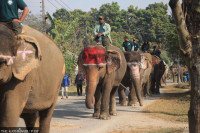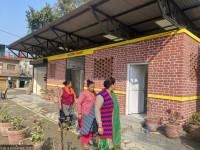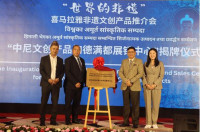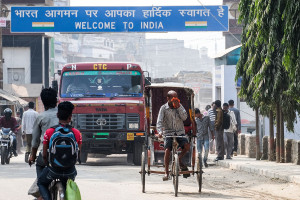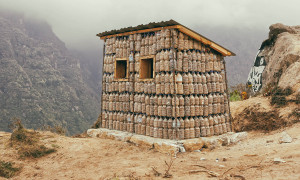Money
Nuwakot solar power station begins supplying electricity to Kathmandu
On sunny days, the plant can produce 100,000 units of electricity daily, officials say.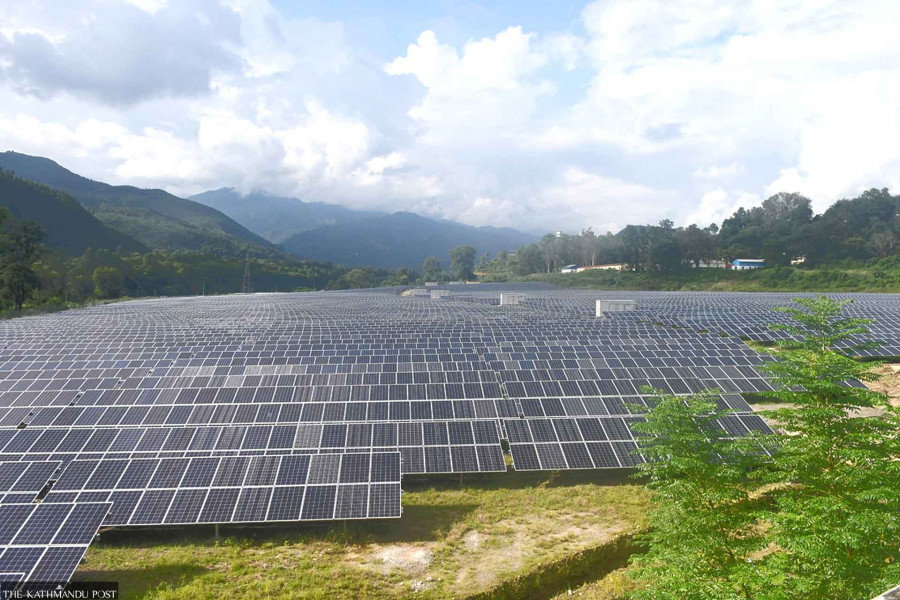
Krishna Thapa
Nepal's largest solar power station, a 25 megawatt plant in Nuwakot, is up and running and lighting homes in Kathmandu.
Work at the construction site, located 63 km northwest of the capital, began five years ago with World Bank funding.
In February 2015, the international organisation agreed to provide $130 million to the government to build solar stations in various locations. Of that amount, $37 million was earmarked for the installation of solar plants at Devighat and Trishuli in Nuwakot district.
The construction was contracted to China's Risen Energy Company on May 17, 2017. Construction was expected to take a year, but work got delayed due to repeated setbacks and legal tangles.
In August 2017, immediately after the contract was signed, the parliamentary Public Accounts Committee ordered that the deal between the project owner Nepal Electricity Authority and the Chinese firm be cancelled.
But the Patan High Court directed the Energy Ministry not to implement the House panel’s decision, and the contract was reinstated. Work on the project was also hit by the Covid-19 pandemic.
Project chief Bikas Bahadur Raghubanshi said that on sunny days, the plant can produce 100,000 units of electricity daily.
The project site receives nine and a half hours of sunshine per day in the winter and 13 hours in the summer.
The electricity produced by the solar plant is transmitted to the Devighat Hydropower Station from where it is supplied to Kathmandu.
The solar installation in Nuwakot has a unique anchoring design as the southern and south-eastern sides of the site are comprised of steep slopes with a slope angle of more than 60 degrees.
The project is spread over 500 ropanis (25 hectares) and has the potential to generate electricity for more than five hours, according to Raghubanshi.
The solar power system will be operated during the daytime to generate power while other hydropower plants like Kulekhani, Kaligandaki A, Madhya Marsyangdi and Chilime, which are semi-reservoir type projects, will supply energy during peak hours in the evening and morning in Kathmandu, according to Raghubanshi.
There are currently five hydropower projects operating in Nuwakot—60 megawatt Upper Trishuli III A, 21 megawatt Trishuli, 14 megawatt Devighat, 5 megawatt Adishakti Satbise and 5 megawatt Tadikhola. The 37 megawatt Upper Trishuli III B is under construction.
According to the Nepal Electricity Authority, the state-owned power utility, average solar radiation varies from 3.6 to 6.2 kWh/m2 per day in Nepal, while there are about 300 sunny days per year.
The authority’s assessment has shown that the commercial potential of solar power for grid connection is about 2,100 megawatts.
Since solar electricity generation systems are easy and quick to install, they are a very attractive option in many locations in the county, according to the report of the authority.
Hydropower is the single largest source of electricity in Nepal, and solar projects are likely to continue to play a major role in the energy mix. The government has a strategy of maintaining the contribution of solar energy at 10 percent of the total energy under the concept of Generation Mix.
In 2018, the government announced that it aimed to build solar plants with a total installed capacity of 500 megawatts within the next five years. Officials at the power utility said that due to the Covid-19 pandemic, many solar projects stalled.
Kulman Ghising, managing director of the Nepal Electricity Authority, said on Wednesday that the authority was constructing solar projects in different parts of the country as per the energy mix objective.
He said that 55 megawatts of solar power had been added to the national grid as of now while plants with a combined capacity of 60 megawatts were under active construction.
Nepal's energy mix, which till date is dominated by hydropower, is expected to be more diverse in the coming years with more private developers showing interest in installing solar plants in different locations.
Last March, a Nepali private company generated 10 megawatts of solar power in the south-eastern region of Dhalkebar, Mahottari where hydropower potential is almost nil, and evacuated it to the national grid. The Dhalkebar plant is spread over nearly 40 bighas (6.3 hectares).
In November 2020, a private producer Ridi Hydropower Development Company evacuated 8.5 megawatts of solar energy to the national grid from its plant in Manigram, Rupandehi.
In the fiscal year 2019-20, the Department of Electricity Development, awarded survey licences to various developers intending to install solar plants at 21 different sites in the country.
The combined installed capacity of these 21 solar plants is 317.14 megawatts.
In March this year, the Nepal Electricity Authority decided to reduce the maximum purchase price for electricity generated by solar plants as it is preparing to procure solar energy through competitive bidding.
The power utility has decided to pay a maximum of Rs5.94 per unit for solar-generated electricity.
For the last three years, the authority has been paying Rs7.30 per unit as provisioned in the Working Procedures on Grid-Connected Alternative Electric Energy Development 2017.
In the last fiscal year ended mid-July, 735 megawatts of electricity, including power from solar plants, was added to the national grid.
With this addition, the country's electricity generation increased to 2,189.6 megawatts in 2021-22, with a mix of 2,075.4 megawatts of hydroelectricity, 54.8 megawatts of solar power, 6.0 megawatts of cogeneration and 53.4 megawatts generated from thermal plants.




 14.12°C Kathmandu
14.12°C Kathmandu
